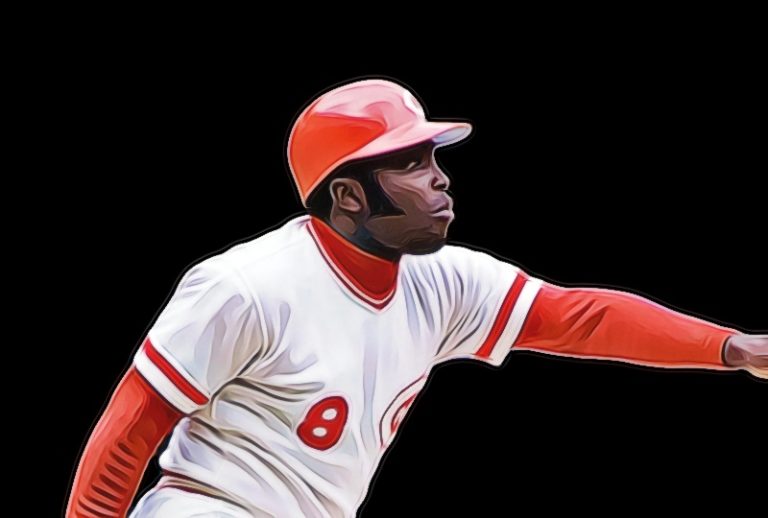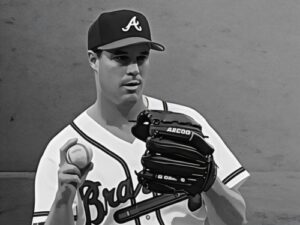Of all the members of The Big Red Machine, Joe Morgan was my favorite. He was, like the Little Engine That Could, an underdog we all marveled at.
Today, Morgan’s family announced that Joe passed away on Sunday, October 11, at the age of 77. It was far too soon to lose one of baseball’s most versatile performers, and a man most believe to be the greatest second baseman in baseball history.
The news comes only days after the baseball world lost Hall of Famer Whitey Ford. Earlier this year, Hall of Famers Al Kaline, Tom Seaver, Lou Brock, and Bob Gibson also passed away. The latter three competed for years in the National League against Morgan.
The Cincinnati Reds were an excellent baseball team in the 1970s. They boasted baseball’s best catcher in Johnny Bench, a kid from Oklahoma with broad shoulders, long sideburns, and a country western singing voice. Then there was Pete Rose, the unyielding force with thick legs, a thick chest, long flowing hair, and a knack for sliding headfirst. The Reds third dominant figure was Tony Perez, a Cuban with a heart of gold and a bat made for pressure situations.
Those three players: Bench, Rose, and Perez, were the triad that guided the Cincinnati team in the early 1970s. In 1970 they dominated the league by winning 70 of their first 100 games under a new (and largely unknown) manager named George “Sparky” Anderson. That fall Bench and Rose and Tony guided the Reds to the World Series. “The Big Red Machine” nickname was earned that season, but they ran out of gas in October and fell to the Orioles.
The trade to Cincinnati
Thirteen months after the Reds lost the 1970 World Series, the team orchestrated a trade with Houston involving eight players. The Reds surrendered slugger Lee May and second baseman Tommy Helms. In return, they acquired outfield prospect Ed Armbrister, pitcher Jack Billingham, outfielder César Gerónimo, and a long-in-the-tooth third baseman named Denis Menke. The cream of the trade was Joe Morgan, a fireplug second baseman who had spent his entire career toiling in obscurity for the Astros.
Once the deal was concluded, Anderson told general manager Bob Howsam, “You just won the pennant for the Cincinnati Reds.”
The addition of Joe Morgan to the Cincinnati clubhouse transformed the team. It balanced the egos on the club, adding a sparring buddy for Rose, whose intensity and strong personality often rubbed teammates the wrong way. Once Joe came in, he and Rose had lockers next to each other and soon baseball was the focus of every conversation in the clubhouse.
“I learned as much baseball [from Joe Morgan] as anyone in the game ever,” Rose said in an interview after his playing career. “If something happened in the game that we didn’t like or could be better, Joe and me talked about it and found out how we could make sure it didn’t happen again.”
With Morgan as a new piston in the Big Red Machine engine, the team had four superstars. The quieter Perez and Bench gravitated to each other, and with the quartet providing the leadership, the Reds became a great team.
“Tony was the peace maker,” Morgan said, “he could defuse any situation with his big smile and playful attitude. Every player [in the clubhouse] respected him.”
With the Big Four pulling in the same direction, the Reds won the pennant in 1972, and a division title the following year. In those two seasons the Machine averaged 97 wins, but they still fell short of their goal of a World Series title.
“We knew we had to win [a World Series] to lose the the label as failures,” Morgan said in an interview with The Sporting News in early 1982. When we got our defense and pitching to match the lineup we had, that’s when we took off.”
Reds win back-to-back titles as Morgan is MVP
Morgan was a huge reason the Reds finally won the World Series in 1975. That season, the 5’7, 160 pounder batted .327 with 107 runs scored, 17 home runs, 94 RBI, 67 steals (in 77 attempts), and 132 walks, which led the league. Morgan’s on-base percentage was a league best .466, and he also won a Gold Glove for his defense at second base. For his efforts, “Little Joe” was named MVP of the National League.
In 1976 it was more of the same, as the Reds won 102 games and repeated as champions, Morgan was named MVP again, hitting .320 with 113 runs scored, 27 home runs, 111 RBI, 60 steals (in 69 tries), and 114 walks. That season, Morgan paced the NL in both on-base percentage and slugging. The only other second baseman to do that was Rogers Hornsby.
At the peak of the Big Red Machine’s dominance, Morgan hit third, behind Rose and Ken Griffey Sr., just in front of Bench, Perez, and the slugging left fielder George Foster. Cincinnati’s vaunted starting lineup was dubbed “The Great Eight,” completed by shortstop Davey Concepcion and center fielder Geronimo. That group is considered by many to be the most versatile and talented lineup in the history of baseball.
“We fed off Joe,” Bench said. “He was the spark that moved the lineup. He could run, he hit for power, and he was the smartest teammate I ever had.”
Bench released a statement on Monday in which he praised Morgan as “one of the best people I’ve ever known.”
Morgan’s hit provided the winning run in 1975 World Series
Morgan was also clutch. In Game Seven of the 1975 World Series against Boston, the Reds were tied with the Red Sox in the top of the ninth. They had runners at first and third with two outs when Morgan lifted a soft fly into center field that scored the winning run. The following year in the Fall Classic against the Yankees, Morgan batted .333 with a double, triple, and a home run in a four-game sweep.
Of all his accomplishments, which included the two MVP awards, five Gold Gloves, and 10 All-Star selections, Morgan was most proud of being a winner. After leaving Houston in that blockbuster trade during the 1971 winter meetings, Morgan was a key component on seven teams that finished in first place, and he played in four World Series, the last when he was 40 years old.
“I prided myself in being a good teammate,” Morgan said in 1990 when he was elected to the Baseball Hall of Fame in his first year of eligibility. “I learned from a lot of guys [on how] to play the game the right way, and all I did was pass that along.”
The Reds were a good team when Joe Morgan arrived in the Queen City in 1972, but they became legendary because the little guy in the middle of the infield, the man they called “The Little General,” lifted them to greatness.






